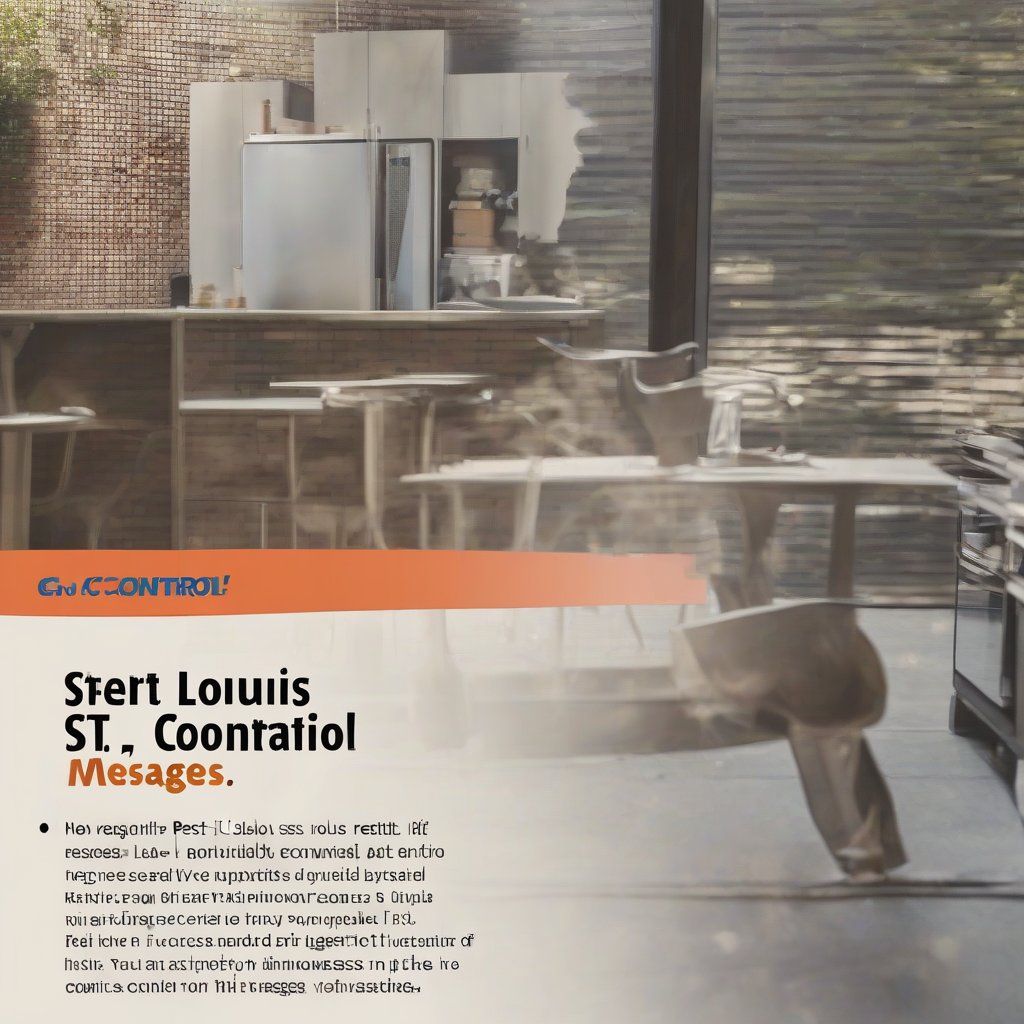Conquering Critters: Your Ultimate Guide to St. Louis Pest Control
St. Louis, with its blend of urban hustle and natural beauty, presents a unique challenge when it comes to pest control. From the bustling city center to the tranquil suburban neighborhoods, unwanted insects and animals can disrupt homes and businesses alike. This comprehensive guide explores the diverse pest landscape of St. Louis, providing practical advice and expert insights to help you effectively manage and eliminate infestations.
Understanding the St. Louis Pest Ecosystem
The region’s climate and diverse environment contribute to a wide array of pests. Understanding these factors is crucial for effective pest management. Here’s a breakdown of common pests in St. Louis:
Common Household Pests:
- Ants: Several ant species thrive in St. Louis, including carpenter ants, pavement ants, and odorous house ants. Their presence can indicate structural issues or improper food storage.
- Rodents: Mice and rats are persistent problems, especially in older buildings. They can contaminate food, damage property, and transmit diseases.
- Cockroaches: German cockroaches, American cockroaches, and other species are attracted to moisture and food sources. Their presence signifies unsanitary conditions.
- Spiders: While many spiders are harmless, some, like black widows and brown recluses, pose a venomous threat. Their webs are often found in dark, undisturbed areas.
- Bed Bugs: These tiny nocturnal insects are notorious for feeding on human blood, causing itchy bites and disrupting sleep.
- Termites: Subterranean termites are a significant threat to homes in St. Louis, causing extensive structural damage if left untreated.
Common Outdoor Pests:
- Mosquitoes: Standing water provides breeding grounds for mosquitoes, increasing the risk of bites and the transmission of diseases like West Nile virus.
- Ticks: Ticks, carriers of Lyme disease and other illnesses, are prevalent in wooded and grassy areas.
- Wasps and Hornets: These stinging insects can build nests near homes, posing a danger to residents.
- Squirrels and other rodents: Squirrels can damage attics and landscaping, while other rodents can burrow in gardens and yards.
- Birds: While generally beneficial, birds can become nuisances if they roost on buildings or damage property.
Effective Pest Control Strategies for St. Louis Homes
A multi-pronged approach is crucial for effective pest control. This includes preventative measures, early detection, and professional intervention when necessary.
Preventative Measures:
- Seal cracks and crevices: Prevent pests from entering your home by sealing any openings in walls, foundations, and around windows and doors.
- Proper sanitation: Regularly clean and disinfect your home, paying attention to kitchens, bathrooms, and storage areas. Store food in airtight containers.
- Eliminate moisture sources: Repair leaky pipes, address dampness, and ensure proper ventilation to discourage pests.
- Landscape maintenance: Keep grass trimmed, remove debris, and prune trees and shrubs away from your home to reduce pest habitats.
- Regular inspections: Regularly inspect your home for signs of pest activity, paying attention to potential entry points.
Early Detection and Identification:
- Visual inspections: Regularly check for droppings, nests, tracks, and other signs of pests.
- Monitor for damage: Look for gnaw marks, holes in walls, and other evidence of pest activity.
- Identify the pest: Accurate identification is critical for effective treatment. Consult pest control resources or professionals for assistance.
Professional Pest Control Services:
When preventative measures fail or a significant infestation occurs, it’s crucial to contact a reputable pest control company. Choosing a qualified professional is vital for effective and safe pest elimination.
- Research and compare: Research different pest control companies in St. Louis, comparing their services, experience, and customer reviews.
- Check licensing and insurance: Ensure the company is properly licensed and insured to operate in St. Louis.
- Understand treatment methods: Discuss the proposed treatment methods and ensure they align with your preferences and environmental concerns.
- Ask about guarantees: Inquire about guarantees or warranties offered by the company.
Specific Pest Control Challenges in St. Louis
St. Louis presents certain unique pest control challenges due to its geographic location and climate:
- Seasonal variations: Pest activity fluctuates throughout the year, requiring adaptive control strategies.
- Proximity to waterways: The Mississippi River and other waterways contribute to mosquito and other water-borne pest populations.
- Older housing stock: Many homes in St. Louis are older, with potential structural vulnerabilities that make them susceptible to pest infestations.
- Urban-rural interface: The blend of urban and rural environments leads to diverse pest pressures.
Choosing the Right Pest Control Method
Various methods are available for pest control, each with its pros and cons. The best approach depends on the specific pest, the severity of the infestation, and your personal preferences.
- Chemical treatments: Insecticides and rodenticides offer effective control but may pose environmental and health risks. Professional application is often recommended.
- Natural methods: Diatomaceous earth, essential oils, and other natural methods can be effective for some pests but may not be sufficient for larger infestations.
- Integrated Pest Management (IPM): IPM is a holistic approach that combines preventative measures, monitoring, and targeted treatments to minimize pest populations while reducing environmental impact.
- Exclusion methods: Sealing entry points, using screens, and installing barriers are effective preventative strategies.
Safety Precautions for Pest Control
Pest control practices should prioritize safety. Always follow the manufacturer’s instructions when using pesticides and take precautions to protect yourself and your family.
- Wear protective gear: Use gloves, eye protection, and respiratory protection when handling pesticides.
- Follow label instructions: Carefully read and follow all instructions on pesticide labels.
- Store pesticides safely: Store pesticides out of reach of children and pets, in a secure and well-ventilated area.
- Dispose of pesticides properly: Dispose of pesticides according to local regulations and guidelines.
- Seek professional help for serious infestations: For severe infestations or if you’re unsure how to handle a situation, it’s always advisable to contact a qualified pest control professional.

